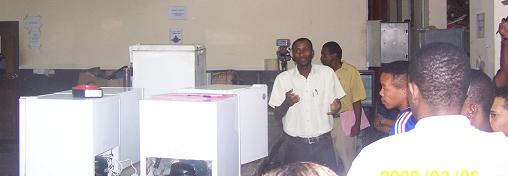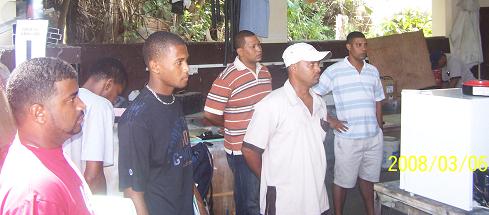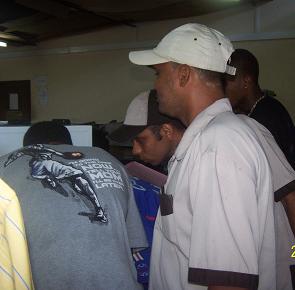International Day for the Preservation of the Ozone Layer September 16-Phase-out plan for CFCs in Seychelles |13 September 2008

The ministry continues to train technicians on how to replace ozone depleting gases
As the world approaches its phase-out date (2010) for total elimination of CFCs (chlorofluorocarbons), as stated under the Montreal Protocol, Seychelles is no exception with its programme to eliminate its remaining CFCs, mainly in imported post-2000 refrigeration equipment.
A cheaper way to ensure it is the introduction of hydro-carbon refrigerants (HR) into the country as an alternative to CFCs.
Hydrocarbon is one of the natural refrigerants largely used in the late 1800s and early 1900s. But its use was considered unreliable and dangerous because of its unknown quantity of impurities, inconsistency in the pressure and temperature relationship, lack of technical ability and standard of equipment being used.
The introduction of CFC-based refrigerants was seen as the ideal solution as they were considered safe, efficient, with a constant temperature and pressure relationship. They became widely used and different mixtures were introduced over many years.
The discovery in the mid-80s of the damage that CFC-based refrigerants were doing to the ozone layer and their contribution to the greenhouse effect led to lobbying against their use by environmental groups, forcing the refrigeration industry to make major changes.
The development of HFC refrigerants (i.e. R134a and other blends) was seen as a solution for the ozone depletion problem, but the use of these refrigerants requires changes in the system components, they were non-compatible with mineral oil, did not give the same performance, and were later found to be contributing to global warming.
The ozone and greenhouse gas issue resulted in environmental pressure influencing consumer awareness and convincing the industry to adopt CFC-free “green-freeze” technology and use natural and environmentally friendly refrigerants.
Hydrocarbon refrigerants are now seen as some of the natural refrigerants that can be efficiently used.
The introduction of HRs (HR12 as drop-in for R12 & R134, HR22 as drop-in for R22) which – apart from being natural refrigerants with a zero ozone depleting potential and minimal global warming effect –have extra advantages such as an auto ignition above that of the lubricating oil, and the byproduct is steam and carbon, not toxic fumes.
They have a system performance comparable and in some cases better than that of the CFC-based refrigerants, they are cheaper as an alternative since only one-third of the original charge weight is needed.
They are compatibile with all oil, O-rings, seals and gaskets, have better energy efficiency and therefore lower power consumption when compared to other chemical refrigerants.
However, hydrocarbon also has its limitations – because of its flammability properties, care and commonsense precautions need to be taken when using HCs.
It is advisable that sparking components are isolated and connections and terminations are done to the highest standard. While handling during storage, transport, brazing and leak detection, modern equipment (scales, leak testers) is best used during servicing and repair of systems, and it must be seen that the system’s HC charge does not exceed the flammability limit of 2% of the room volume.
The application of HRs (especially HR12 in automobile AC units) locally has been successful and there is no doubt that the use of HRs when retrofitting the existing R12 system and even recharging the R134a system is a better option than HFC refrigerants.
Since HR refrigerants are new to countries in our region, the ozone unit in the Department of Environment is ensuring that all refrigerant technicians are given adequate and appropriate training on the usage and safety aspects of the hydrocarbon refrigerant on Mahe, Praslin and the inner islands.
This conforms with the requirements of the Montreal Protocol Adjustment that took effect in May for the accelerated phasing-out of hydro-chlorofluorocarbons (HCFCs) used mainly in air-conditioning units. Hydro-carbon (HR) will be the refrigerant gas of the future.








